Digital Experiences
I have worked with a number of software developers over the years, proposing, commissioning and helping to develop digital experiences from simple touchscreen databases and games to large scale interactive projections and fully immersive spaces. From the humble push-button or joystick to gestural interfaces, the magic of RFID, proximity sensors and screens that recognise the objects placed on them. Touchscreens tend to be used when there is a lot of content to communicate but it can often go unread. If at all possible it is preferable to work with the client to prioritise the key messages in order to deliver something more targeted, unique and memorable. I personally like exhibits that mix tactile, physical interfaces with digital feedback.
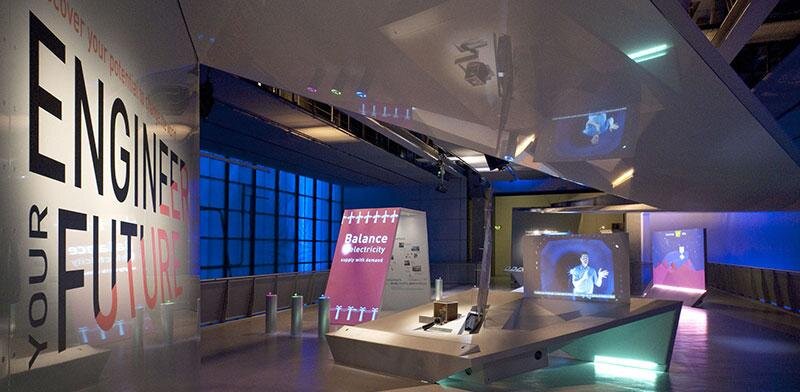
Engineer Your Future - Science Museum London. I worked with Kiss The Frog to develop, evaluate and troubleshoot a set of three huge multi-player projection exhibits that challenge visitors to plan and build different types of networks: a railway network; an electricity grid and a baggage handling system, before testing them ‘live’.
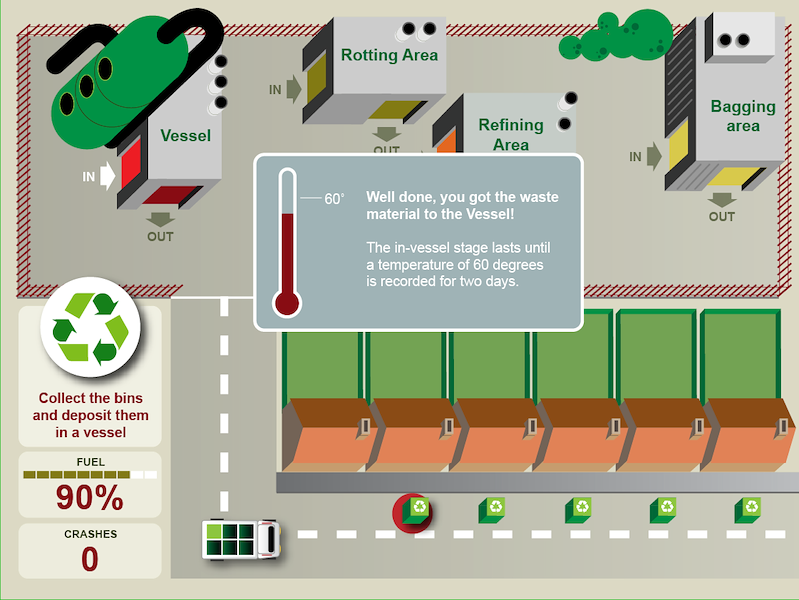
Woodland Composting Centre - East Sussex. The challenge in this simple computer game was to make learning about composting exciting. I worked with Joe Cutting to develop this exhibit. Visitors have to drive the composting truck to collect the composting waste and take to the various parts of a composting plant and in the process they learn how composting works

'Plaque Attack' Exhibit - from the travelling exhibition 'Keep Britain Smiling' which was made by KCA London for Colgate. Visitors have to brush the giant teeth and eliminate the plaque as it builds up (shown by glowing red LEDs). Sensors within the teeth measure their progress and feedback is given on the screen within the mouth structure.
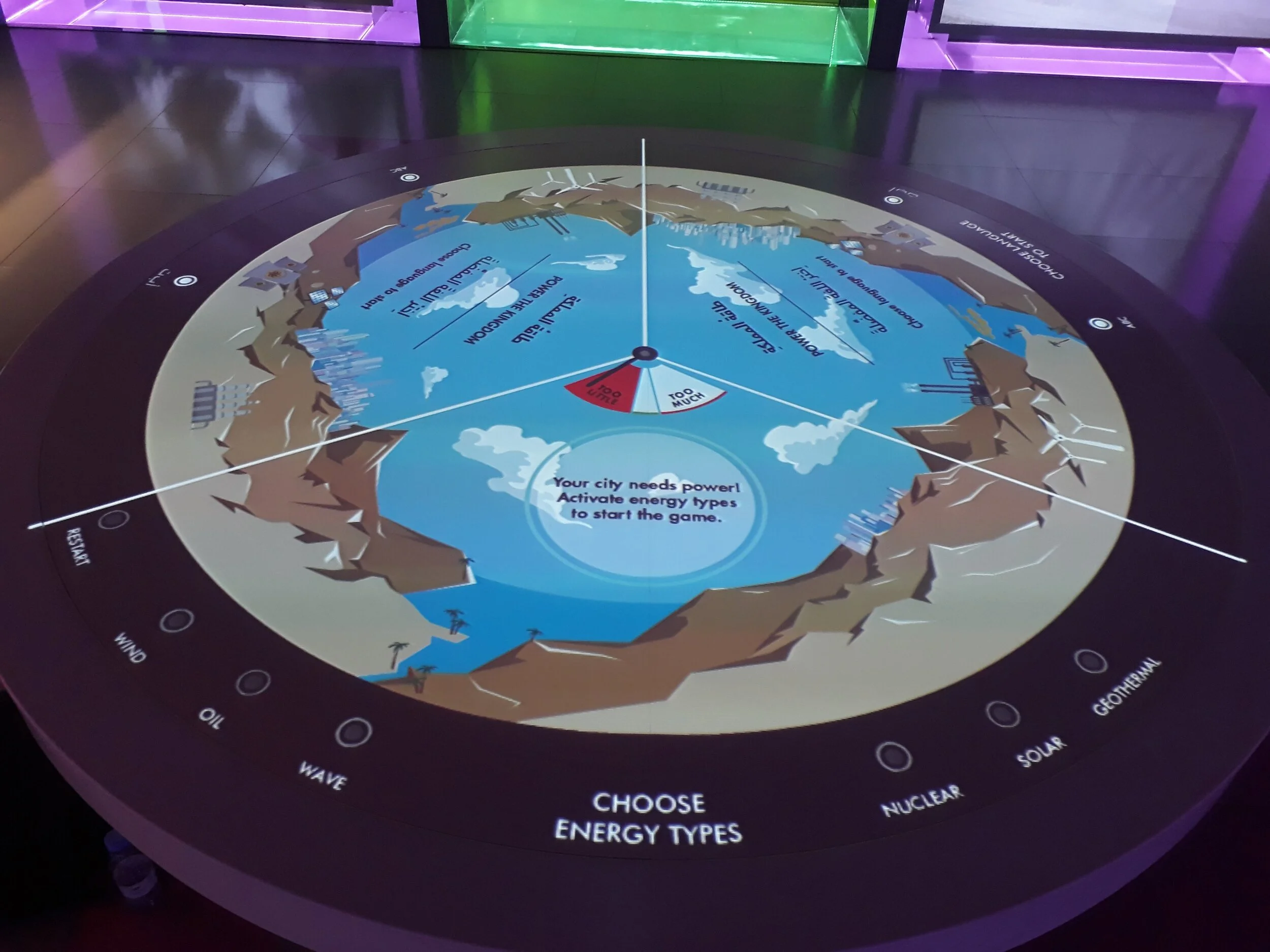
'Power The City' Exhibit - for Mishkat Centre for Atomic and Renewable Energy. Following an evaluation I had done of Mishkat's exhibit offer, I identified a number of exhibits for replacement. I then mentored their staff to develop a set of new exhibits and this was one of them. It identified the pros and cons of different energy sources to power a city and it required that users respond to changing events to supply a balanced mix.
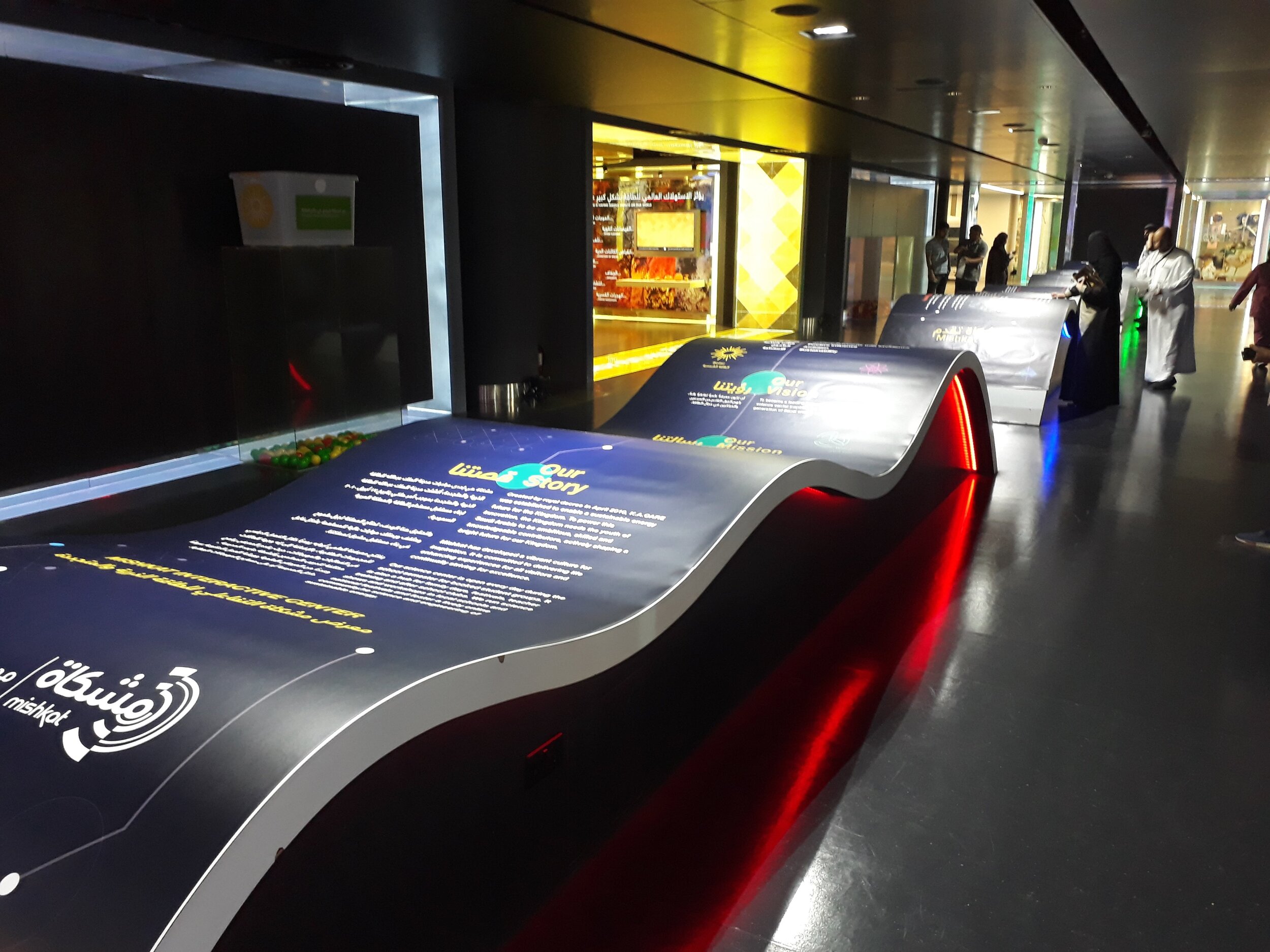
'Central Hall' Exhibit - for Mishkat Centre for Atomic and Renewable Energy. Following my evaluation of Mishkat's exhibits, this key orientation space in the centre of the building became a target for redevelopment. I wrote the tender for the work and helped evaluate the responses and manage the development.
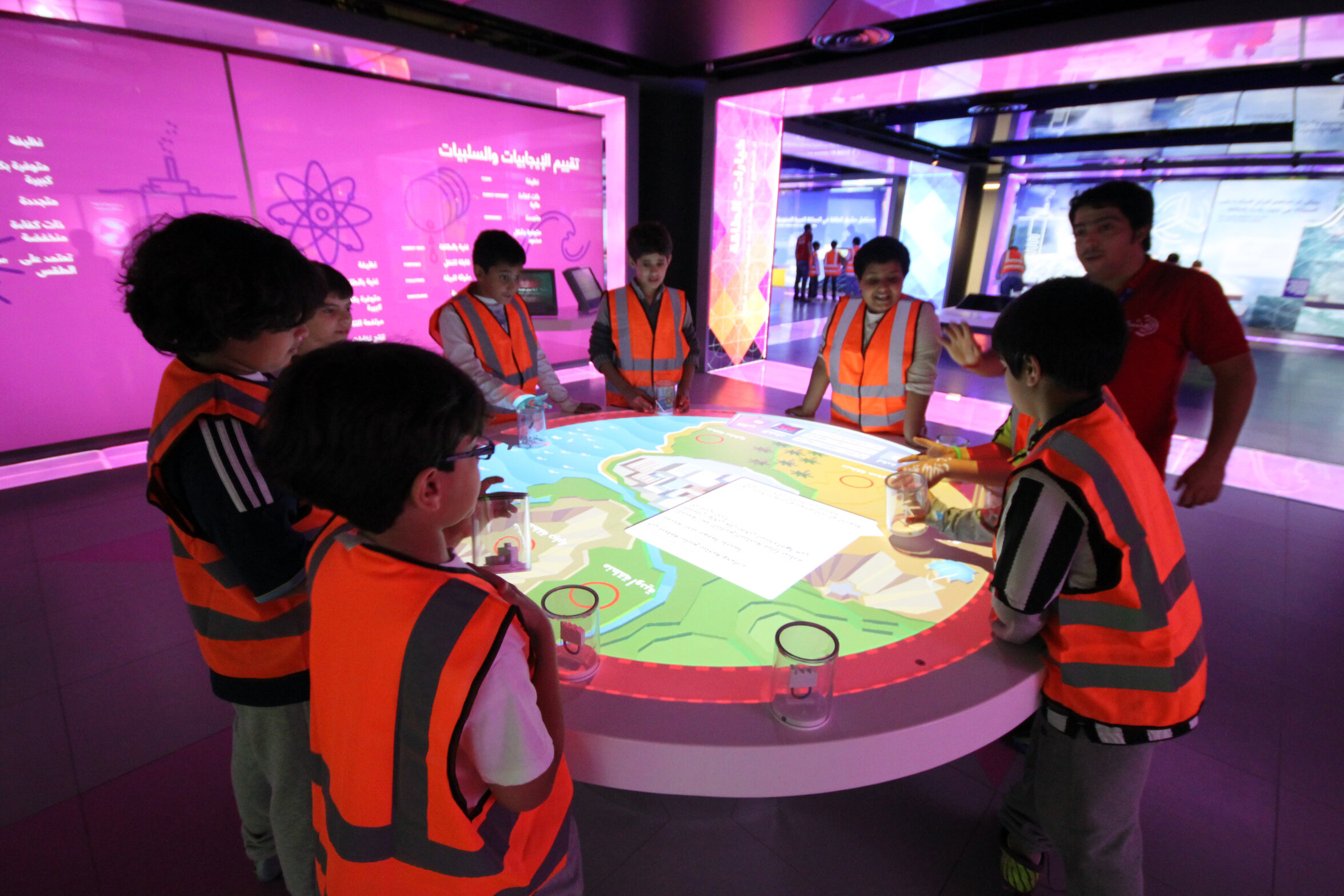
'Power The City' Exhibit - for Mishkat Centre for Atomic and Renewable Energy. This was the original exhibit we installed. It used models of different types of power source set within acrylic tubes with RFID tags in the bases. The finished exhibit looked lovely and had a lot of promise but sadly was let down by overly complicated software. Some valuable lessons were learnt.
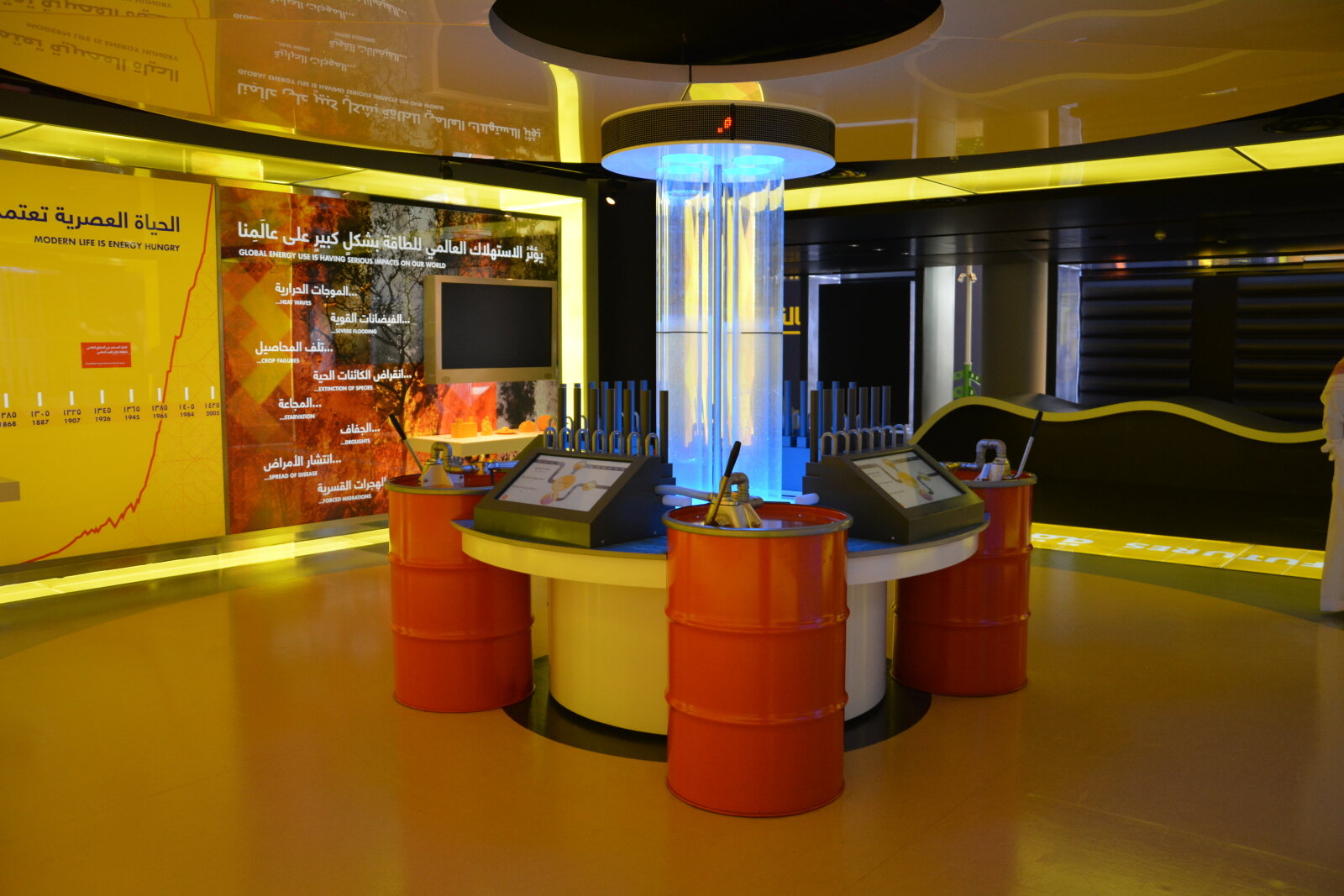
'Our Precious Liquids' Exhibit - for Mishkat Centre for Atomic and Renewable Energy. This exhibit demonstrated the link between oil and desalinated water in Saudi Arabia. Saudi Arabia is the worlds largest supplier of energy in the form of oil. It also consumes a staggering 20% of all the energy it produces. The vast majority being used to desalinate water or for air conditioning. Yet we discovered through evaluation that many children in the Kingdom are not aware of any link between oil and water. This highly active exhibit which involves competing with your friends to pump oil through a model desalination plant to produce water whilst learning about the process.
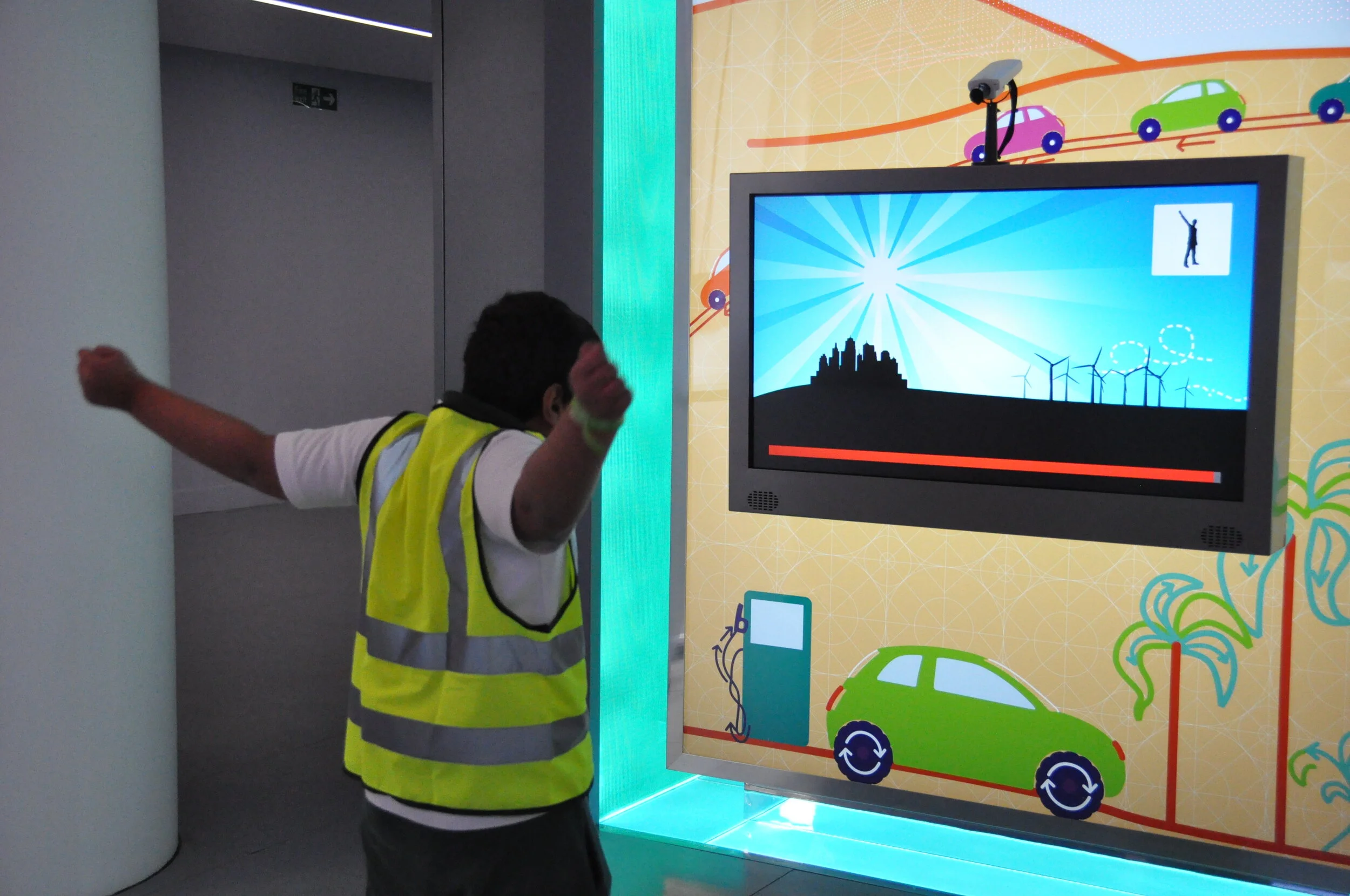
'Energy Everywhere' Exhibit - for Mishkat Centre for Atomic and Renewable Energy. This exhibit has visitors use gestures to trigger animations that show that there is energy everywhere and there are many ways to capture it.

'Future Shaper' Exhibit - Saudi 2050 Travelling Exhibition. Developed by KCA London and Kiss The Frog this exhibit uses pucks to interact with a screen. Each puck represents a different design parameter and turning them gives different options to select from. Visitors use the exhibit to design different products of the future. When they are satisfied with their design they save it to a display along with other visitor's work.

'Robot Arm' Exhibit - Saudi 2050 Travelling Exhibition. Visitors program a robot arm by placing a set of counters (containing RFID tags) with instructions on them (e.g. left one, down two, close grabber, etc.). The objective is to pick up a ball and place it into a ball run.

'Future Shaper' Exhibit - Saudi 2050 Travelling Exhibition. Developed by KCA London and Kiss The Frog this exhibit uses pucks to interact with a screen. Each puck represents a different design parameter and turning them gives different options to select from. Visitors use the exhibit to design different products of the future. When they are satisfied with their design they save it to a display along with other visitor's work.
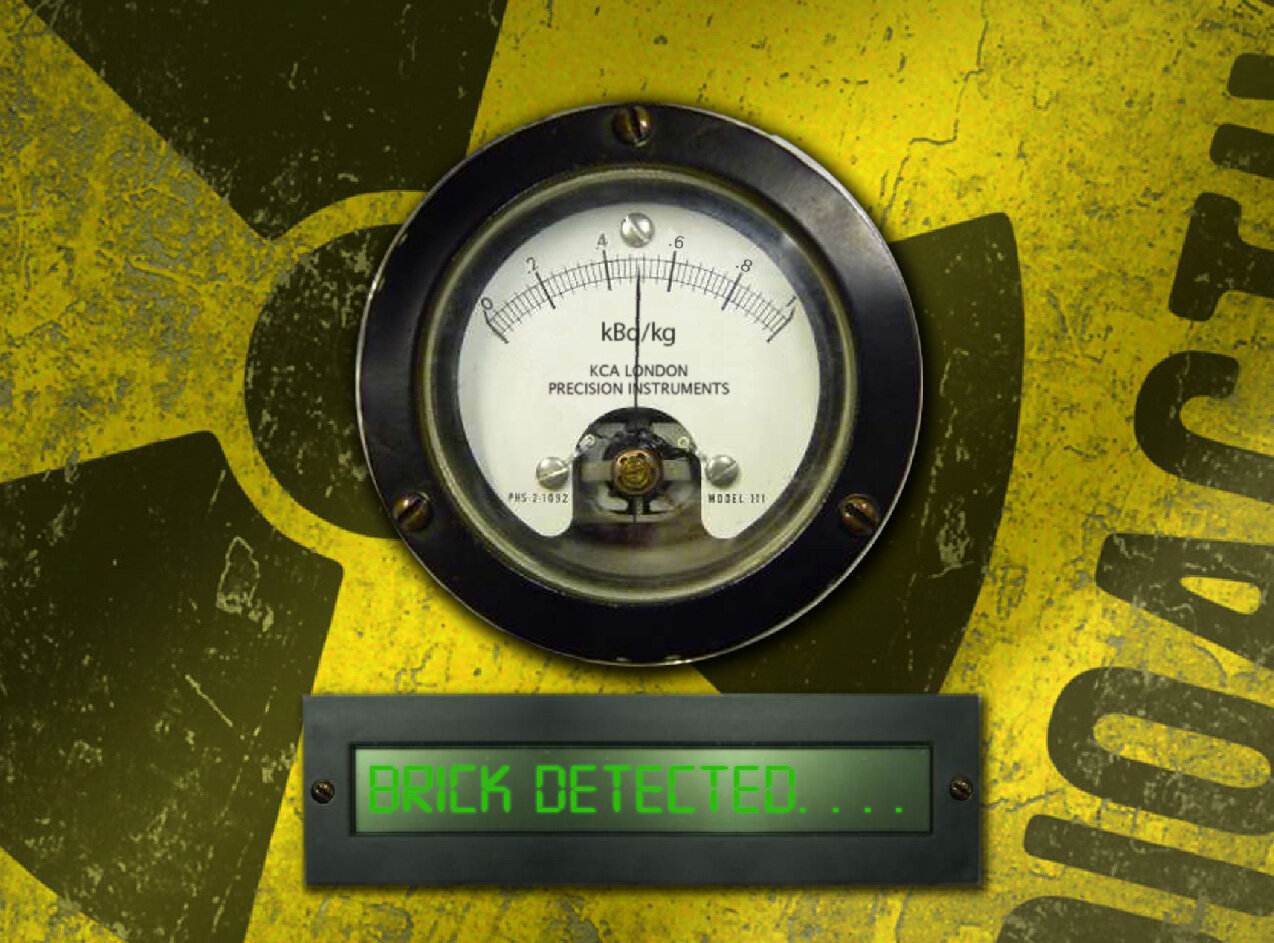
'Geiger Counter' Exhibit - NECSA. This is the display from an exhibit that I wrote the software for. It used RFID tags and was controlled with an Arduino board. A number of common daily items (or models of them) were fixed on a turntable which users rotate to pass the items under a Geiger counter. The display showed a reading for how radioactive they are.
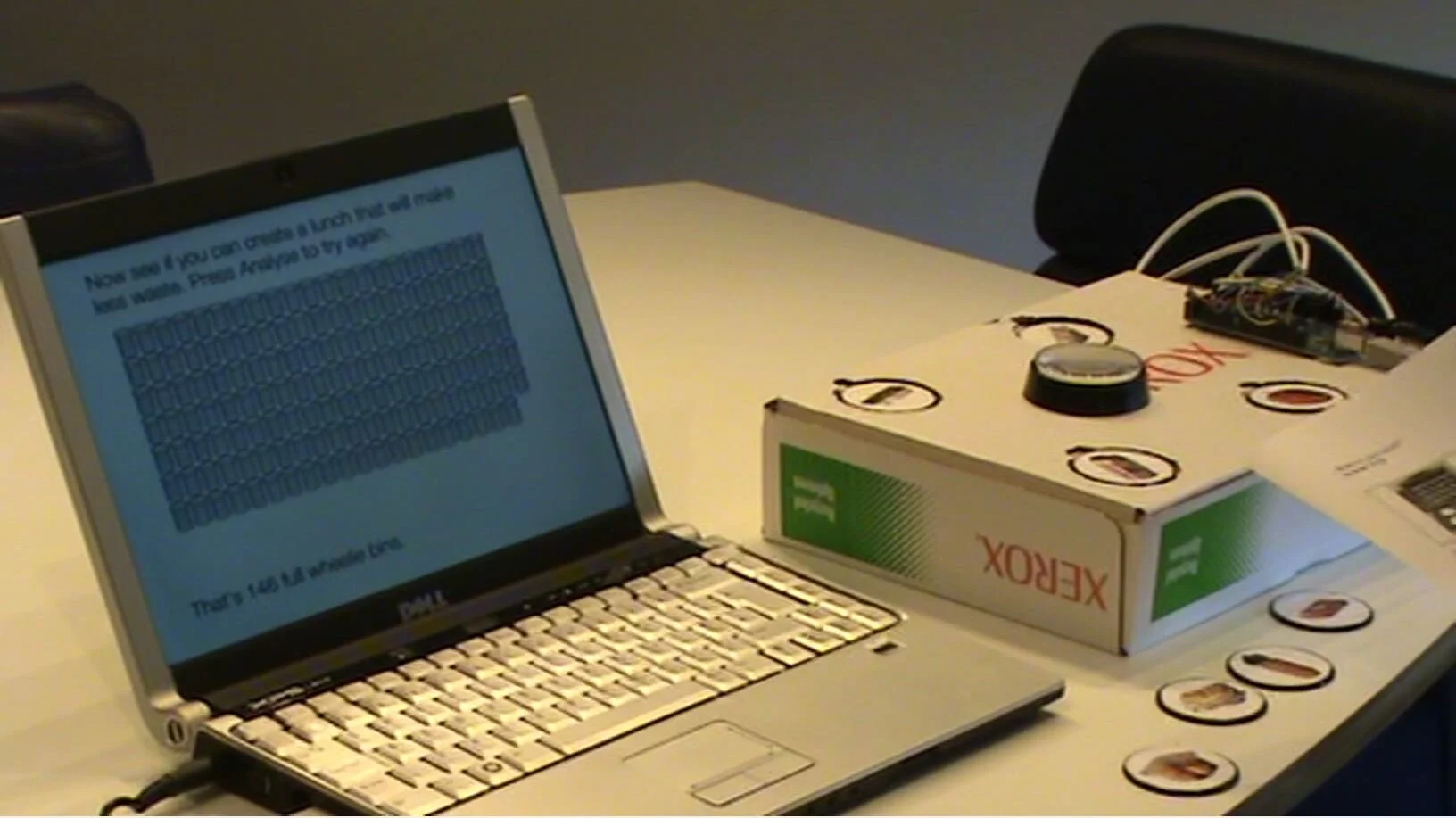
'What's In Your Lunch' Exhibit - East Sussex Composting Centre. This is a prototype of an exhibit I made that uses RFID tags and an Arduino controller. The exhibit shows how reducing the amount of packaging in your lunch box can dramatically reduce the amount of waste going to landfill